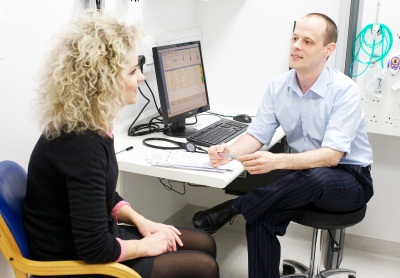Asthma UK have launched, what is arguably, an innovative patient safety campaign in medicines use. The well-respected charity published a report on unsafe prescribing in Asthma which was robust and well presented. The report built on the National Review of Asthma Deaths and unearthed some startling facts about the number of patients who are at risk of harm from particular combinations or inhalers, or the use of some inhalers for moderate to severe asthma.
So far this is nothing, sadly, that we haven’t seen before in many guises. A sterling report on the deficiencies of any aspect of healthcare. What is innovative about that I hear you say?
I would suggest there are two innovative components to this. The first is that this report takes a clear stance on what it considers to be “unsafe” and the second is the resources to bring about change are directed to patients to help them take control of their safety.

 When we consider how good prescribing is we can imagine a quality continuum. At the ‘good’ end we have shared decision making between patient and clinician, sound drug choices, managed risk and this means treatment can be considered optimised. At the opposite end we have error prone care, maverick decision making and negligible regard for the patient’s preferences. Unsafe prescribing has often been considered to be erroneous prescribing; perhaps as the result of an unintended slip or lapse. As our understanding of safety has evolved we have come to think of unsafe prescribing as care which has an unreasonable or unjustifiable risk of harm associated with it. There are a few examples which have a clear consensus about being unsafe. Examples are; prescribing warfarin without monitoring its effects; prescribing benzodiazepines (such as diazepam) long term, or prescribing anti-inflammatory painkillers without gastric protection to people who are susceptible to bleeds in the stomach.
When we consider how good prescribing is we can imagine a quality continuum. At the ‘good’ end we have shared decision making between patient and clinician, sound drug choices, managed risk and this means treatment can be considered optimised. At the opposite end we have error prone care, maverick decision making and negligible regard for the patient’s preferences. Unsafe prescribing has often been considered to be erroneous prescribing; perhaps as the result of an unintended slip or lapse. As our understanding of safety has evolved we have come to think of unsafe prescribing as care which has an unreasonable or unjustifiable risk of harm associated with it. There are a few examples which have a clear consensus about being unsafe. Examples are; prescribing warfarin without monitoring its effects; prescribing benzodiazepines (such as diazepam) long term, or prescribing anti-inflammatory painkillers without gastric protection to people who are susceptible to bleeds in the stomach.
What Asthma UK have done with this campaign is to effectively ‘up the ante’ for prescribing of certain types or combinations of inhalers. Shifting the definition from sub-optimal to unsafe. And no prescriber wants to be thought of doing something which is unsafe.

 The most innovative part of this campaign is the subtlety and responsible nature of the campaign for patients. The campaign, and the charity as a whole, makes it absolutely clear that treating Asthma with inhalers is a good thing. Inhaled medications save lives and provide a quality of life which would be inconceivable for many patients with asthma if they went untreated. This is evident throughout the advice to patients; it’s not about stopping therapy, it’s about avoiding unnecessary risk by optimising therapy.
The most innovative part of this campaign is the subtlety and responsible nature of the campaign for patients. The campaign, and the charity as a whole, makes it absolutely clear that treating Asthma with inhalers is a good thing. Inhaled medications save lives and provide a quality of life which would be inconceivable for many patients with asthma if they went untreated. This is evident throughout the advice to patients; it’s not about stopping therapy, it’s about avoiding unnecessary risk by optimising therapy.
The subtlety comes from the underlying assumption that patients and parents have a role in taking charge of their own safety when it comes to the medicines they are prescribed. And most importantly that in this part of their care, they are equal partners with the prescriber. This, in my opinion, is a brilliant example of how the patient experience and medicines safety can be put into practice to optimise care.
There seems to be a lot to learn from this campaign for other high risk prescribing. There are other areas of prescribing that might benefit from having the “unsafe” badge. Prescribing of sulfonylurea for diabetics at high risk of hypoglycaemia; Not prescribing an anticoagulant for patients with Atrial Fibrillation and a high risk of stroke; Prescribing antipsychotics in combination for patients with schizophrenia…the list goes on, as does the risk of avoidable death. Could patients with these conditions also benefit from the type of campaign that Asthma UK has so adeptly exemplified?